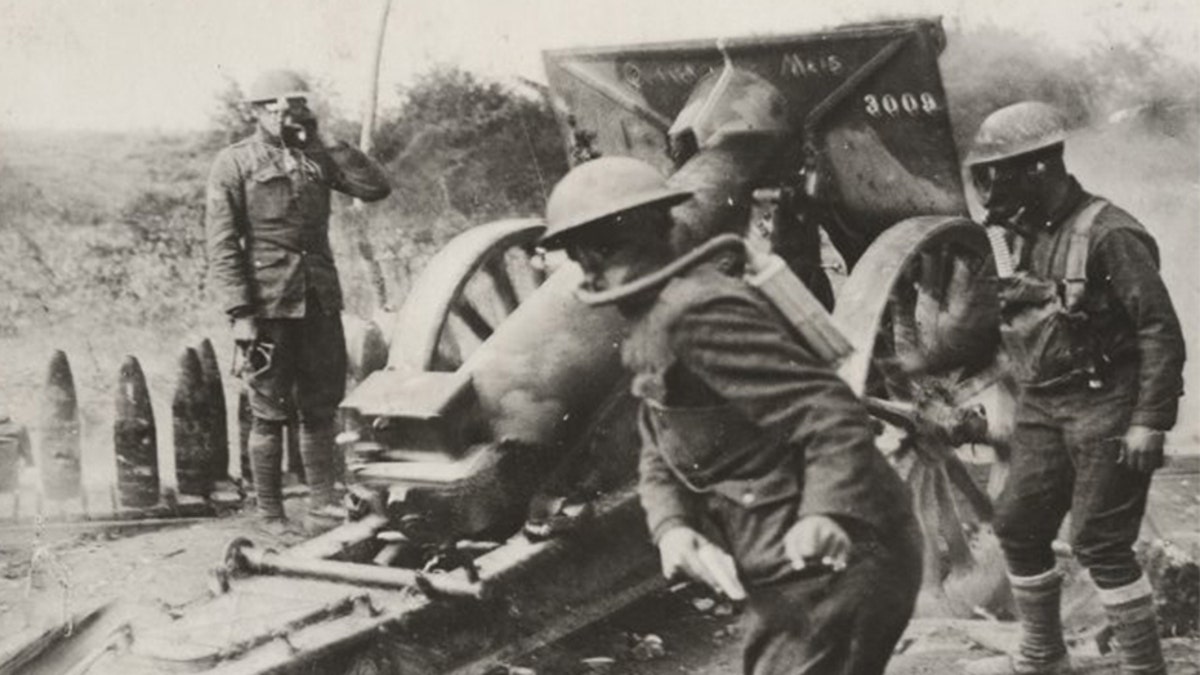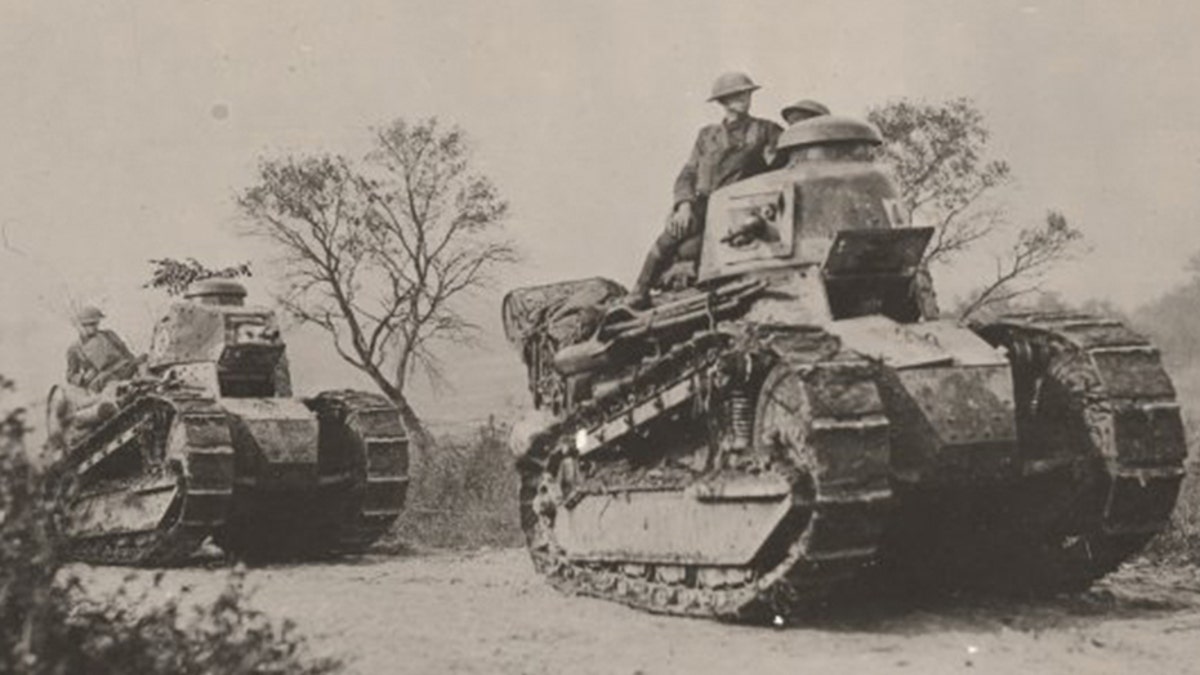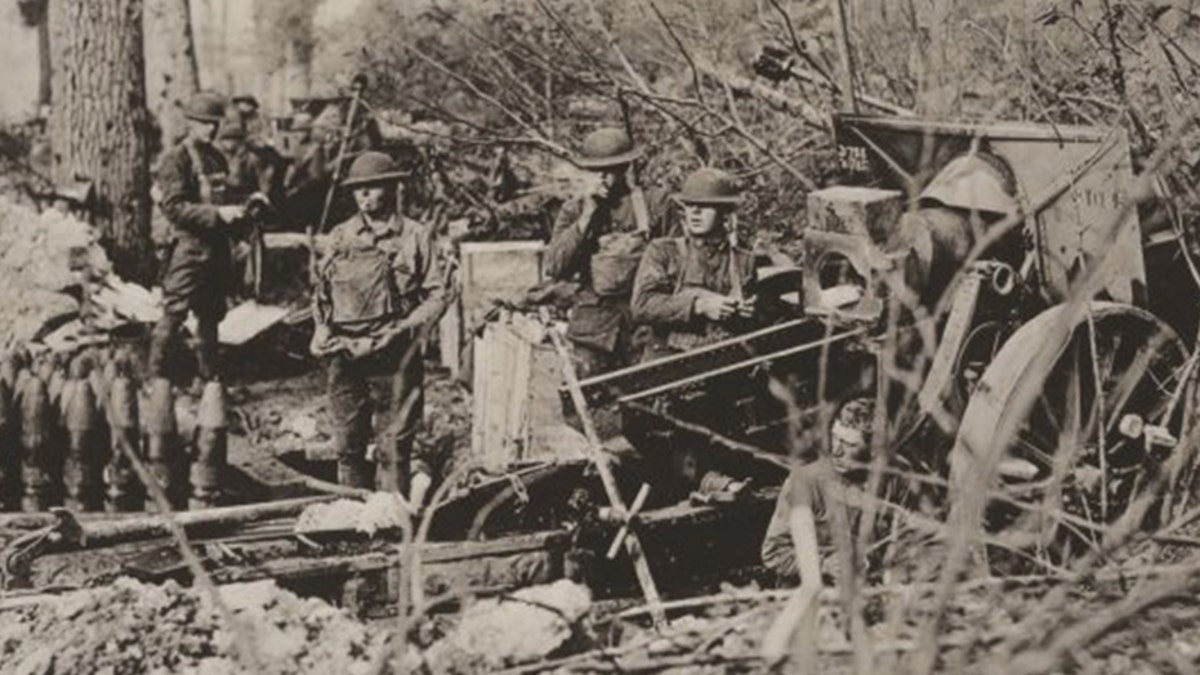
American soldiers in the Army’s 108th Field Artillery – under fire from enemy gas shells – strike back in Varennes-en-Argonne, France. (National WWI Museum and Memorial)
A century ago Wednesday, the first shots were fired in one of the most important American military engagements ever -- and the deadliest battle in U.S. history.
World War I's Meuse-Argonne Offensive, which involved more than a million American soldiers and claimed the lives of 26,277, was launched in northern France on Sept. 26, 1918 to push the German army out of the country and reclaim a rail network vital to supplying enemy troops. The fight lasted a grueling 46 days and generated scores of stories of heroism and sacrifice.
But most notably, it helped bring an end to The Great War.
“In its scale and in the number of American and French troops involved, not only infantry but artillery, tanks, engineers… just the logistics in this, made it the largest operation that the American armed forces had been in to that point,” Doran Cart, a senior curator at the National WWI Museum and Memorial in Kansas City, told Fox News.

American soldiers, near Boureuilles, ride on top of tanks on the way to a division’s headquarters on the first day of the Meuse-Argonne Offensive. (National WWI Museum and Memorial)
Photos of the battle the museum shared with Fox News provide a glimpse of the emotions and constant threats both sides endured.
In one photo, American troops donning gas masks amid a chemical attack are also seen firing back at the Germans with their own artillery strike. Another shows the sullen faces of German prisoners-of-war as they draw water from a well for their mess hall.
The offensive started Sept. 26, with the French town of Verdun as the centerpiece of the Allied operations, Cart says.
American infantry forces, supported by 2,700 pieces of artillery, 189 tanks, and 821 aircraft, according to the U.S. Army Center of Military History, spread out in an area about 15 to 20 miles wide, bordered by the Meuse River on one end and the thick Argonne Forest on the other.
The Allies’ mission was to fight northward and break through a heavily-fortified network of German defenses that ran about 15 miles deep.

Captured German prisoners draw water from a well for their mess hall in Pierrefitte-sur-Aire, France. (National WWI Museum and Memorial)
“This was a very well defended area, but it was basically the last well-defended area on the Western Front,” Cart told Fox News.
The American forces at the start of the offensive quickly gained ground, but rainy, muddy weather in the following days stalled it and gave the Germans time to regroup.
By the end of September, the U.S. troops pushed eight miles into the German defenses and took 9,000 of them prisoner, the U.S. Army Center of Military History says.
The Argonne Forest and its surrounding areas was one of the focal points of the battle in October, and the rugged, unpredictable terrain contributed to massive amounts of American casualties.
“The main factor in all of this was that it was a different kind of fighting than what had occurred before in World War I,” Cart told Fox News. “This wasn’t trench to trench -- this was getting up and attacking the enemy and when you do that you are a lot more exposed.”
Cart says 60 percent of all battlefield deaths in World War I were caused by artillery, and the Meuse-Argonne Offensive had plenty of it.

Howitzers belonging to the 106th Field Artillery are prepared for action during the Meuse-Argonne Offensive. (National WWI Museum and Memorial)
“The number of artillery pieces used in this offensive was staggering,” he said. “So it was everywhere.”
By early November, the U.S. forces reached their objective and on the 11th, an armistice was signed between the Allies and Germans, ending the war. That day every year has become the American holiday Veterans Day.
The Meuse-Argonne Offensive, left 28,000 Germans dead as well, according to the Army Heritage Center.
One of the most famous stories to come out of the offensive was the exploits of the “Lost Battalion,” a group of American soldiers who ended up getting surrounded in the Argonne Forest by the Germans.
During one rescue attempt of the soldiers, American artillery forces accidentally started shelling their own men.
“WE ARE ALONG THE ROAD PARALELL 276.4. OUR ARTILLERY IS DROPPING A BARRAGE DIRECTLY ON US. FOR HEAVENS SAKE STOP IT,” Maj. Charles W. Whittlesey cried out in a message affixed to a carrier pigeon that flew to his compatriots nearby.
The troops held their position for five days and nights and eventually were rescued, but ended up losing 107 men, according to statistics from the National Archives.
Army Air Force Lt. Harold E. Goettler and Lt. Erwin R. Bleckley managed to assist in the rescue effort by dropping supplies to the stranded troops from a plane – one of first times that American forces did so, Cart says, and both went on to earn the Medal of Honor, along with Whittlesey and other soldiers.
“Heroism at that time was recognized as doing something beyond the regard for themselves,” Cart told Fox News. “They had to do something that took them out of their own safety zone and saving other humans.”

